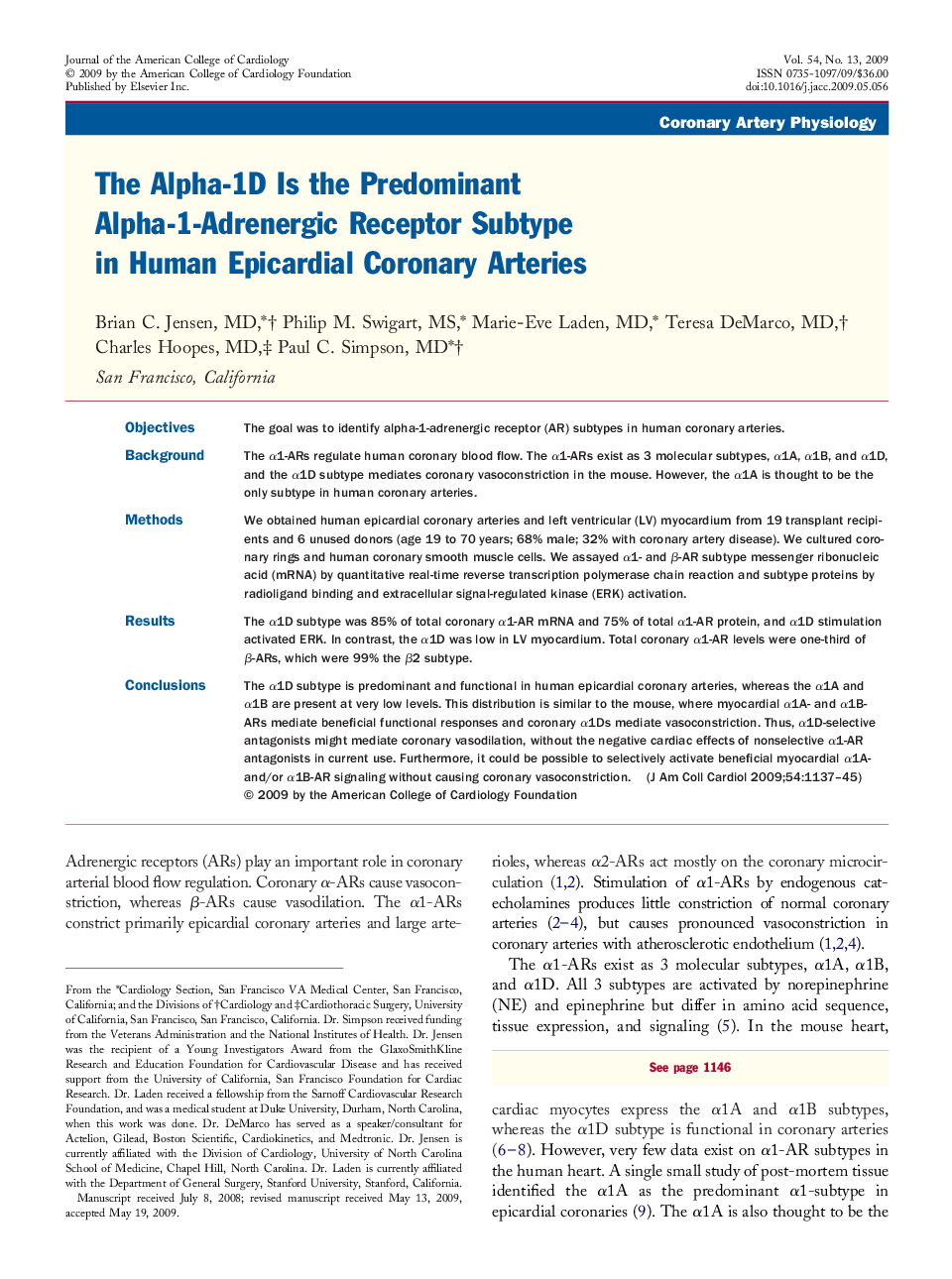| Article ID | Journal | Published Year | Pages | File Type |
|---|---|---|---|---|
| 2950898 | Journal of the American College of Cardiology | 2009 | 9 Pages |
ObjectivesThe goal was to identify alpha-1-adrenergic receptor (AR) subtypes in human coronary arteries.BackgroundThe α1-ARs regulate human coronary blood flow. The α1-ARs exist as 3 molecular subtypes, α1A, α1B, and α1D, and the α1D subtype mediates coronary vasoconstriction in the mouse. However, the α1A is thought to be the only subtype in human coronary arteries.MethodsWe obtained human epicardial coronary arteries and left ventricular (LV) myocardium from 19 transplant recipients and 6 unused donors (age 19 to 70 years; 68% male; 32% with coronary artery disease). We cultured coronary rings and human coronary smooth muscle cells. We assayed α1- and β-AR subtype messenger ribonucleic acid (mRNA) by quantitative real-time reverse transcription polymerase chain reaction and subtype proteins by radioligand binding and extracellular signal-regulated kinase (ERK) activation.ResultsThe α1D subtype was 85% of total coronary α1-AR mRNA and 75% of total α1-AR protein, and α1D stimulation activated ERK. In contrast, the α1D was low in LV myocardium. Total coronary α1-AR levels were one-third of β-ARs, which were 99% the β2 subtype.ConclusionsThe α1D subtype is predominant and functional in human epicardial coronary arteries, whereas the α1A and α1B are present at very low levels. This distribution is similar to the mouse, where myocardial α1A- and α1B-ARs mediate beneficial functional responses and coronary α1Ds mediate vasoconstriction. Thus, α1D-selective antagonists might mediate coronary vasodilation, without the negative cardiac effects of nonselective α1-AR antagonists in current use. Furthermore, it could be possible to selectively activate beneficial myocardial α1A- and/or α1B-AR signaling without causing coronary vasoconstriction.
